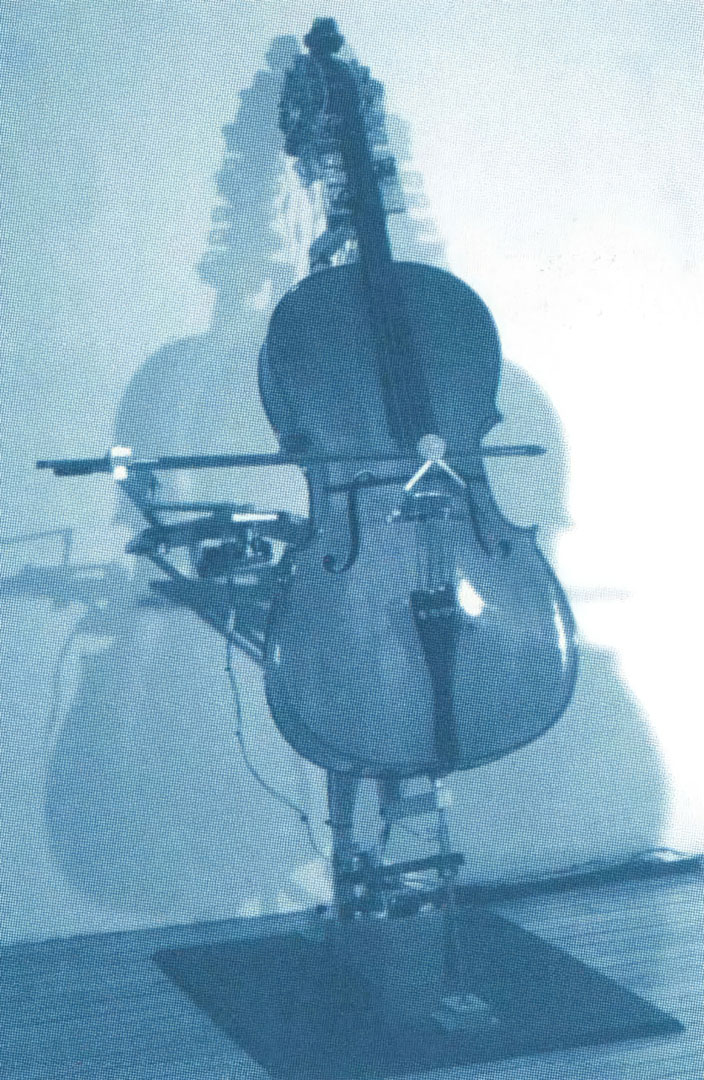“Cello” by Beatriz da Costa
Title:
Artist(s) and People Involved:
Exhibiting Artist(s):
Symposium:
Medium:
Artist Statement:
My interest in robotic art grew out of the desire to add behavior and interactivity to my sculpture and installation work. My training in basic engineering technologies and computer science methodologies has made it possible for me to experiment with notions of embodied interactivity and interactive narratives as new means of expression. Cello is a robotic sound installation, which combines autonomous behavior with interaction. The piece concerns itself with the act of learning, performing, and adapting oneself to external pressures.
Cello consists of an automated acoustic cello that alters its behavior in response to computer generated sine wave tones and to the position of visitors in the space. The cello tunes itself. String after string tightens and loosens slowly on motorized pegs, while being bowed and compared to the sine wave tones emitted by a speaker. A pick-up microphone transmits the cello frequencies to the computer program, in which their relationship to the “right” frequencies is evaluated. The pegs, in response, will turn in one direction or the other until each string is approximately in tune.
Once the cello has approximated the goal of self-tuning, it performs a set of simple phrases by manipulating and adjusting its own bodily elements. The cello advances slowly from phrase to phrase, while being monitored by the program and compared to a predefined sequence. Each phrase is repeated until it has been correctly performed before advancing to the next one. However, the physical predisposition of the instrument does not allow it to ever fully meet the expectation of a perfectly executed musical performance. To complicate matters further, if approached by a visitor too closely, the cello interrupts its current behavior (tuning or playing) and performs a random “irritated” behavior. If provoked over a long time, it eventually “untunes” itself and reverts back to its starting point. Once left alone the cello begins to retune itself and attempts to perform again.
While there has been a history of automated mechanical instruments such as player pianos, and early century musical automata, a technological structure has not been created that can fully replace human presence in the musical performance process. Cello not only addresses the history of human desire to replace and extend human activities with machinery and the importance of embodiment within intelligent systems, but incorporates both of these subject areas in an interactive metaphorical narrative, performed by a computer, a cello, a speaker and the visitors.





